Zobacz znane osoby, które dzięki nam mogły spocząć w swojej ojczyźnie.
Zobacz znane osoby, które dzięki nam mogły spocząć w swojej ojczyźnie.
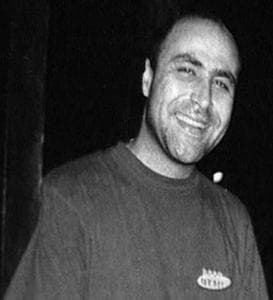
Życiorys:
Mounir Abdallah Bouamrane (Munir Abd Allah abu Amran) (ur. 4 marca 1968 w Algierze, zm. 7 maja 2004 w Iraku) – montażysta dźwięku i obrazu pochodzenia algierskiego, zabity w czasie misji dziennikarskiej w Iraku razem z dziennikarzem Waldemarem Milewiczem.
Jego matka była Polką. Po zdaniu matury (1988) przeniósł się do Polski i uzyskał zawód technika urządzeń audiowizualnych. Od 1993 pracował w Telewizji Polskiej, był montażystą obrazu i dźwięku w Telewizyjnej Agencji Informacyjnej; współpracował m.in. z programami informacyjnymi (Panorama).
Na początku maja 2004 wyjechał do Iraku wraz z ekipą Telewizji Polskiej; spełniał rolę zarówno montażysty, jak i tłumacza. Zginął w czasie ostrzału pojazdu dziennikarzy. Został pośmiertnie odznaczony przez Prezydenta Aleksandra Kwaśniewskiego Złotym Krzyżem Zasługi.
Pochowany na Cmentarzu Muzułmańskim na warszawskich Powązkach
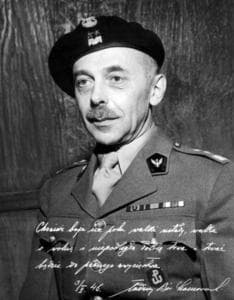
Życiorys:
Tadeusz Bór-Komorowski ps. „Bór”, „Znicz”, „Lawina” (ur. 1 czerwca 1895 w Chorobrowie w pow. Brzeżany, zm. 24 sierpnia 1966 w Buckley w Anglii) – generał dywizji Wojska Polskiego, dowódca Armii Krajowej.
Urodził się w rodzinie Mieczysława Mariana Komorowskiego herbu Korczak i Wandy Zaleskiej-Prawdzic. Spokrewniony z gen. Tadeuszem Rozwadowskim, w majątku którego przyszedł na świat. Karierę wojskową rozpoczął w armii austro-węgierskiej. W czasie I wojny światowej służył na froncie rosyjskim i włoskim. W Wojsku Polskim od 1918. W wojnie bolszewickiej dowódca 12. Pułku Ułanów. Brał udział w bitwie pod Komarowem (został w niej ranny).
Następnie m.in. instruktor jazdy konnej w Oficerskiej Szkole Artylerii w Warszawie (1922–1923), uczestnik olimpiady w Paryżu 1924 w jeździectwie, kwatermistrz a następnie zastępca dowódcy 8 Pułku Ułanów (1924–1926), kierownik ekipy jeździeckiej na olimpiadzie w Berlinie 1936[1]. W latach 1927–1938 dowódca 9. Pułku Ułanów w Trembowli, a 1938-1939 komendant Centrum Wyszkolenia Kawalerii w Grudziądzu.
W kampanii wrześniowej najpierw dowódca Ośrodka Zapasowego Zgrupowania Kawalerii w Garwolinie, a następnie zastępca dowódcy Kombinowanej Brygady Kawalerii płk Adama Zakrzewskiego w składzie Armii Lublin.
W konspiracji komendant Obszaru Kraków ZWZ, od maja 1940 generał brygady; po dekonspiracji i przedostaniu się do Warszawy zastępca komendanta głównego ZWZ – dowódcy AK, od 1 lipca 1943 (formalnie od 17 lipca) dowódca Armii Krajowej. Od marca 1944 generał dywizji. Podjął decyzję o wybuchu powstania warszawskiego:
ŻOŁNIERZE STOLICY! Wydałem dziś upragniony przez Was rozkaz do jawnej walki z odwiecznym wrogiem Polski, najeźdźcą niemieckim. Po pięciu blisko latach nieprzerwanej walki, prowadzonej w podziemiach konspiracji, stajecie dziś otwarcie z bronią w ręku, by ojczyźnie przywrócić wolność i wymierzyć zbrodniarzom niemieckim przykładną karę za terror i zbrodnie dokonane na ziemiach Polskich.
Od 30 września 1944 – Naczelny Wódz Polskich Sił Zbrojnych. Po upadku powstania w niewoli.
Po wojnie przebywał na emigracji w Wielkiej Brytanii, gdzie do 1946 był Naczelnym Wodzem Polskich Sił Zbrojnych na obczyźnie, 1947–1949 pełnił urząd premiera rządu RP na uchodźstwie. Od lipca 1956 wchodził w skład emigracyjnej Rady Trzech. Pochowany na cmentarzu Gunnersbury w Londynie.
• Order Orła Białego (pośmiertnie 1995)
• Krzyż Komandorski Orderu Wojennego Virtuti Militari
• Krzyż Kawalerski Orderu Wojennego Virtuti Militari
• Krzyż Złoty Orderu Wojennego Virtuti Militari
• Krzyż Srebrny Orderu Wojennego Virtuti Militari
• Krzyż Wielki Orderu Odrodzenia Polski
• Krzyż Oficerski Orderu Odrodzenia Polski
• Krzyż Walecznych – trzykrotnie
• Złoty Krzyż Zasługi z Mieczami
• Złoty Krzyż Zasługi
• Srebrny Krzyż Zasługi
• Generał Bór-Komorowski miał tytuł hrabiowski, pochodził z rodziny pieczętującej się herbem Korczak.
• W 2004 gen. Tadeuszowi Borowi-Komorowskiemu został pośmiertnie nadany tytuł honorowego obywatela miasta Głowna.

Życiorys:
Clarence Felician Chinniah Ur. 1951, zm. 8 stycznia 2009 w Warszawie – lankijski dyplomata, ambasador nadzwyczajny i pełnomocny Demokratyczno-Socjalistycznej Republiki Sri Lanki w Polsce.
Misję dyplomatyczną jako ambasador sprawował od 30 sierpnia 2007.
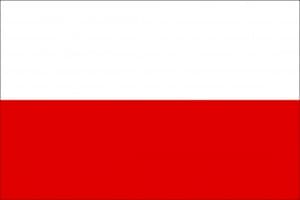
Życiorys:
+ śp. Ryszard Stefan Dembiński (24 lutego 1924 – 29 czerwca 2008) – był sybirakiem, wraz z matką został zesłany przez Sowietów do Kazachstanu. Wstąpił do armii generała Władysława Andersa, a później jako żołnierz 1. Dywizji Pancernej gen. Stanisława Maczka brał udział w wyzwalaniu Francji, Belgii i Holandii. Po zakończeniu wojny Ryszard Dembiński pozostał na emigracji w Londynie. Tam pełnił przez wiele lat funkcję sekretarza, członka redakcji i przewodniczącego Komitetu Redakcyjnego „Przeglądu Kawalerii i Broni Pancernej”. Aktywnie działał w Polskim Instytucie i Muzeum im. Generała Sikorskiego w Londynie. Od 1999 roku honorowo pełnił funkcję członka Rady Dziedzictwa Archiwalnego przy ministrze kultury, Rady Studium Polski Podziemnej i Kapituły Orderu Odrodzenia Polski.
Firma BONGO zorganizowała transport ciał Państwa Dembińskich – Rotmistrza Ryszarda Stefana Dembińskiego i jego małżonki Wandy Róży hr. Raczyńskiej herbu Nałęcz. Ciała przewieziono z Londynu do Poznania.
Para została pochowana w krypcie rodowej Raczyńskich w Rogalinie.
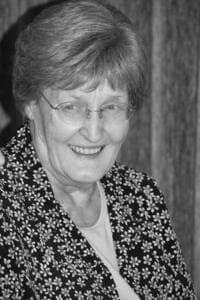
Życiorys:
+ śp. Wanda z Raczyńskich DEMBIŃSKA (30.09.1933 – 2.02.2016) – córka prezydenta RP Edwarda Raczyńskiego, prawdziwa dama ze światowym obyciem i wielką mądrością życiową. Miała szczęście znać wiele wybitnych osobistości polskich XX wieku i przez to była prawdziwym świadkiem historii. Ludzi zawsze traktowała z szacunkiem i sympatią. Pełna humoru i radości życia z hartem godnym podziwu znosiła ciężką, nieuleczalną chorobę. Sił dodawała Jej głęboka i żarliwa wiara w Boga.
Firma BONGO zorganizowała transport ciał Państwa Dembińskich – Rotmistrza Ryszarda Stefana Dembińskiego i jego małżonki Wandy Róży hr. Raczyńskiej herbu Nałęcz. Ciała przewieziono z Londynu do Poznania.
Para została pochowana w krypcie rodowej Raczyńskich w Rogalinie.
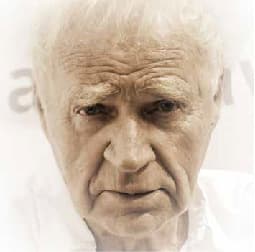
Życiorys:
Janusz Głowacki (ur. 13 września 1938 w Poznaniu, zm. 19 sierpnia 2017 w Egipcie) – polski prozaik, dramaturg, scenarzysta.
W młodości był związany ze Studenckim Teatrem Satyryków, gdzie wystąpił w programie Czarna przegrywa czerwona wygrywa (1956) w reżyserii Jerzego Markuszewskiego i Wojciecha Solarza. Studiował aktorstwo w Państwowej Wyższej Szkole Teatralnej w Warszawie i historię na Uniwersytecie Warszawskim. W 1961 ukończył studia na Wydziale Polonistyki Uniwersytetu Warszawskiego.
Zadebiutował w 1960 w „Almanachu Młodych” opowiadaniem pod tytułem „Na plaży”, w 1964 rozpoczął współpracę z czasopismem „Kultura”, gdzie zwrócił na siebie uwagę jako autor błyskotliwych opowiadań i felietonów. Publikacje te złożyły się na zbiory Wirówka nonsensu (1968) i Nowy taniec la-ba-da (1970).
Na przełomie lat 60. i 70. rozpoczął aktywną działalność jako scenarzysta. W 1969 powstał film Andrzeja Wajdy Polowanie na muchy, do którego Głowacki napisał scenariusz. Jednak prawdziwym sukcesem okazał się dopiero obraz stworzony we współpracy z Markiem Piwowskim pt. Rejs. Ponadto napisał scenariusze do filmów Trzeba zabić tę miłość (1972) Janusza Morgensterna, Choinka strachu (1982) Tomasza Lengrena, Wałęsa. Człowiek z nadziei (2013) Andrzeja Wajdy. Pisał dialogi do filmu Jej portret (1974) Mieczysława Waśkowskiego, wspólnie z Łukaszem Zadrzyńskim był scenarzystą Billboardu (1998). Wspólnie z Pawłem Pawlikowskim był scenarzystą Zimnej wojny (2018), która znalazła się w oficjalnej selekcji Międzynarodowego Festiwalu Filmowego w Cannes. Film zdobył w Cannes nagrodę dla najlepszego reżysera, którą Paweł Pawlikowski dedykował Januszowi Głowackiemu.
Do 1981 publikował felietony w warszawskiej „Kulturze”. Na kilka dni przed ogłoszeniem stanu wojennego, Głowacki wyjechał na premierę swojej sztuki Kopciuch w Royal Court Theatre(ang.) w Londynie, po 13 grudnia 1981 zdecydował się pozostać za granicą. Osiadł w Stanach Zjednoczonych, gdzie rozwinął swoją twórczość dramatopisarską i współpracował między innymi z Polskim Instytutem Teatralnym w Nowym Jorku. Utworem, który zwrócił uwagę amerykańskich środowisk teatralnych była sztuka Polowanie na karaluchy (1986). Największym sukcesem dramaturgicznym okazała się Antygona w Nowym Jorku (1992), dramat z dużym powodzeniem wystawiany był w teatrach w USA i w Europie.
Głowacki był wykładowcą na Columbia University, Bennington College(ang.) w Vermont, i wizytującym dramaturgiem w New York Public Theater, Mark Taper Forum(ang.) w Los Angeles i Atlantic Center for the Arts(ang.) na Florydzie. Po powrocie do Polski współpracował z warszawskim Teatrem Ateneum pod dyrekcją Gustawa Holoubka.
Jego twórczość była tłumaczona na wiele języków (angielski, chiński, czeski, estoński, francuski, hiszpański, koreański, niemiecki, rosyjski, ukraiński, serbski, słowacki, węgierski, turecki). Był członkiem Stowarzyszenia Pisarzy Polskich, a także amerykańskich zrzeszeń literackich: PEN Clubu, Stowarzyszenia Pisarzy Wschodnioamerykańskich oraz Stowarzyszenia Dramatopisarzy.
Źródło: Wikipedia
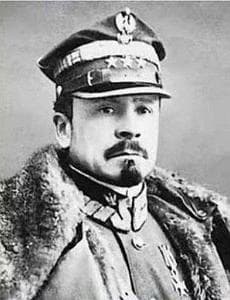
Życiorys:
Józef Haller von Hallenburg (ur. 13 sierpnia 1873 w Jurczycach, zm. 4 czerwca 1960 w Londynie) – generał broni Wojska Polskiego, legionista, harcmistrz, Przewodniczący ZHP, działacz polityczny i społeczny, brat stryjeczny gen. Stanisława Hallera von Hallenburga.
Urodził się 13 sierpnia 1873 r. w majątku Jurczyce pod Krakowem (gmina Skawina), jako trzecie z kolei dziecko arystokraty-ziemianina Henryka Hallera von Hallenburga i Olgi z Treterów. Pochodził w prostej linii od Jana Hallera, księgarza i właściciela pierwszej w Polsce oficyny wydawniczej w XVI wieku. Młodszym bratem Józefa był Cezary, późniejszy poseł do parlamentu austriackiego i kapitan wojsk polskich.
W 1882 r. rodzina Hallerów przeniosła się do Lwowa, gdzie młody Józef rozpoczął naukę w gimnazjum niemieckim. Po ukończeniu gimnazjum wstąpił do wojskowej Niższej Szkoły Realnej w Koszycach na Węgrzech (obecnie Słowacja), a następnie do prestiżowej Wyższej Szkoły Realnej w Hranicach na Morawach (ówcześnie Maehrisch-Weisskirchen), do której uczęszczali także arcyksiążęta austriaccy. Po ich ukończeniu studiował na Akademii Technicznej w Wiedniu na wydziale artylerii.
W 1903 r. poślubił Aleksandrę Salę. W 1906 r. urodził się jego syn Eryk.
Po ukończeniu studiów Józef Haller został mianowany na stopień podporucznika i rozpoczął 15-letni okres służby w wojsku austriackim. W latach 1895-1910 służył w 11 Pułku Artylerii we Lwowie i Stanisławowie. Pełnił funkcję instruktora, a następnie komendanta w jednorocznej ochotniczej szkole oficerskiej artylerii. Przeprowadził reformę nauczania, usuwając zdemoralizowanych zawodowych oficerów ze stanowisk instruktorskich i zastępując ich ochotnikami. Pomimo przykrości, jakich mu to przysporzyło ze strony przełożonych, wprowadził do szkół oficerskich język polski. Powoływał się na uchwały parlamentu wiedeńskiego, które dopuszczały częściowe używanie języka polskiego w wojsku. Za osiągnięcie znakomitych wyników otrzymał najwyższe austriackie odznaczenie wojskowe Wojskowy Medal Zasługi (Signum Laudis)[1].
W 1910 r. wystąpił ze służby w armii austro-węgierskiej ze względu na to, że Osiągnąwszy stopień kapitana, nie mogąc się niczego więcej w artylerii austriackiej nauczyć, opuszczam ją by w inny sposób służyć krajowi, aż do chwili, w której Ojczyzna mnie będzie potrzebowała.
Po wystąpieniu z wojska Haller poświęcił się pracy społecznej. Działał aktywnie w ruchu spółdzielczym, gdzie osiągnął znaczne sukcesy. W 1912 r. objął stanowisko inspektora w Towarzystwie Kółek Rolniczych, gdzie zajmował się m.in. organizacją kursów rolniczych, hodowlanych i mleczarskich. Związał się także z powstającym od 1911 r. ruchem skautowym i Towarzystwem Gimnastycznym „Sokół”. Haller zajmował się tam m.in. militaryzacją „Sokoła” a także spolszczeniem ruchu skautowego i przekształceniem go w harcerstwo.
Od połowy 1912 r. prowadził intensywną pracę jako instruktor wojskowy: zakładał drużyny Sokoła, organizował tajne kursy żołnierskie, podoficerskie i oficerskie dla młodzieży polskiej. W 1913 r. wraz z kolegami opracował wzory oznak i terminów harcerskich, z których wiele obowiązuje do dzisiaj. Szczególny wkład wniósł w stworzenie Krzyża Harcerskiego, proponując połączenie w nim wzoru Krzyża maltańskiego z polskim krzyżem Virtuti Militari.
Wybuch wielkiej wojny stał się sygnałem do mobilizacji członków polskich paramilitarnych organizacji patriotycznych. 27 sierpnia 1914 r. wydany został rozkaz o powstaniu Legionów Polskich, na mocy którego zaczęto formować we Lwowie Legion Wschodni pod dowództwem gen. Adama Pietraszkiewicza. Haller, wyreklamowany z poboru do wojska austriackiego, był głównym organizatorem tej formacji powstającej z połączenia Drużyn Polowych „Sokoła”, Drużyn Bartoszowych i części Polskich Drużyn Strzeleckich. W tym czasie klęski ponoszone w Galicji przez armię austriacką doprowadziły do zajęcia przez armię rosyjską Lwowa i całej Galicji wschodniej. Legion musiał ewakuować się w okolice Mszany Dolnej. Jednostka, mimo ostatecznego ukończenia formowania, nie weszła jednak do walki. Na skutek upadku morale wśród żołnierzy i sprzeciwu wobec żądanej przez austriackie dowództwo przysięgi na wierność cesarzowi, legion uległ rozwiązaniu.
Józef Haller objął dowództwo nad żołnierzami, którzy chcieli kontynuować walkę z Rosją w Legionach Polskich. Po przeformowaniu i uzupełnieniu szeregów nowymi ochotnikami objął stanowisko dowódcy 3 Pułku Legionów. W tym czasie awansowany do stopnia podpułkownika. 30 września 1914 r. wyruszył wraz ze swą jednostką z Krakowa na front w Karpatach Wschodnich. W niezwykle trudnych warunkach terenowych i klimatycznych Brygada wspomagała obronę przełęczy karpackich i broniła wojskom rosyjskim dostępu na Węgry.
Na początku października 1914, brygada dotarła w Karpaty po stronie węgierskiej. 12 października oddziały 3 pułku piechoty pod dowództwem Hallera zdobyły wieś Rafajłowa leżącą już w Galicji. Główne siły Legionów dotarły do Rafajłowej 22 i 23 października wybudowaną przez saperów drogą wiodącą przez przełęcz w pobliżu góry Pantyr w Gorganach (po wojnie nadano im nazwy nazwy Przełęcz Legionów i Droga Legionów) i podjęły natarcie w kierunku Stanisławowa. 24 października zdobyły Nadwórną, a 29 października stoczyły bitwę pod Mołotkowem i poniósłszy ciężkie straty wycofały się ponownie w rejon Rafajłowej. W listopadzie brygadę podzielono na dwie części, oddziały pod dowództwem Hallera pozostały w Rafajłowej, pozostałe kontynuowały walki na Huculszczyźnie i Bukowinie północnej.
24 stycznia 1915 r. Rosjanie przypuścili gwałtowny nocny atak na pozycje 3 Pułku Legionów. Legioniści, mimo początkowego zaskoczenia, dzięki opanowaniu i odwadze swojego dowódcy, odparli nieprzyjaciela zadając mu duże straty i biorąc wielu jeńców. W wyniku ciągłych walk oddziały utraciły jednak blisko 50% stanów osobowych.
Po odparciu ataków i ponownym ustabilizowaniu linii frontu podpułkownik Haller przekazał dowództwo 3 Pułku mjr. Minkiewiczowi, a sam pozostał w 2 Brygadzie jako oficer dyspozycyjny dowódcy. 14 marca 1915 awansował do stopnia pułkownika.
W maju 1915 r. uległ na przepustce pod Częstochową poważnemu wypadkowi samochodowemu i przez 10 miesięcy przebywał na leczeniu szpitalnym. Wiosną 1916 r. Haller wszedł w skład Rady Pułkowników, skupiającej dowódców jednostek legionowych, będącej w opozycji do pro-austriackiej Komendy Legionów. W lipcu 1916 r. otrzymał ponownie przydział i został dowódcą 2 Brygady Legionów Polskich. Po kryzysie przysięgowym w lipcu 1917 dowodził II Brygadą, która weszła w skład podporządkowanego Austrii Polskiego Korpusu Posiłkowego.
15 lutego 1918 r., protestując przeciwko postanowieniom traktatu brzeskiego, wraz z podległą mu 2 Brygadą i innymi oddziałami polskimi przebił się przez front austriacko-rosyjski pod Rarańczą i połączył się z polskimi formacjami w Rosji. Otrzymał przydział na dowódcę nowo sformowanej 5 Dywizji Strzelców Polskich, a od 28 marca 1918 r. dowodził jednostkami całego II Korpusu Polskiego na Ukrainie. 7 kwietnia 1918 r. otrzymał nominację na stopień generała.
Obecność jednostek polskich na Ukrainie była widziana przez Niemcy jako naruszenie warunków Traktatu Brzeskiego. W nocy z 10 na 11 maja 1918 r. bez żadnych uprzedzeń przeważające liczebnie oddziały niemieckie zaatakowały jednostki polskie rozlokowane w okolicy Kaniowa. Po całodziennej walce i wyczerpaniu się zapasów amunicji II Korpus Polski został zmuszony do złożenia broni. Straty niemieckie wyniosły ok. 1500 zabitych i rannych, polskie nie przekraczały 1000. Po rozbiciu Korpusu Józef Haller uniknął niewoli i pod fałszywym nazwiskiem „Mazowiecki” przedostał się przez Kijów do Moskwy, gdzie stanął na czele Polskiej Komisji Wojskowej.
W lipcu 1918 r. generał Haller dotarł przez Karelię i Murmańsk do Francji, gdzie 4 października 1918 r. Komitet Narodowy Polski powierzył mu formalne dowództwo nad formującą się armią polską. Jednostki te były organizowane poprzez ochotniczy zaciąg spośród Polaków służących w wojsku francuskim, byłych polskich jeńców wojennych z armii austro-węgierskiej i niemieckiej (około 35 000) oraz Polonii z USA (około 22 000 zwerbowanych w Obozie Kościuszko) i Brazylii (300 osób). Polityczne zwierzchnictwo nad Armią pełnił od 23 lutego 1918 r. Komitet Narodowy Polski. Na mocy układu z 28 września 1918 r. Błękitna Armia została uznana przez państwa Ententy za samodzielną, sojuszniczą i jedyną współwalczącą armię polską.
W 1918 r. oddziały Armii pod dowództwem Hallera (1 Pułk Strzelców Polskich od lipca, a od października cała 1 Dywizja Strzelców Polskich) walczyły z Niemcami na froncie zachodnim w Wogezach i Szampanii.
Zakończenie wojny nie przerwało rozbudowy armii. Jej liczebność wynosiła ostatecznie ponad 100 000 żołnierzy. Uzbrojona w całości przez Francję, osiągnęła wysoką sprawność bojową. Do czerwca 1919 r. wraz całym sprzętem została przetransportowana etapami do Polski przez Gdańsk. Nowoczesna broń Błękitnej Armii, a zwłaszcza samoloty i czołgi Renault FT-17, wydatnie wzmocniły tworzące się Wojsko Polskie. Generał Haller przybył do Warszawy 21 kwietnia 1919 r. gdzie witany był jak bohater narodowy, a magistrat nadał mu tytuł honorowego obywatela miasta Warszawy.
Jako że Błękitna Armia była jedynym jednolicie uzbrojonym dużym związkiem operacyjnym w odtworzonym Wojsku Polskim, dowództwo postanowiło nie rozbijać go na mniejsze związki. Całość sił skierowano na front walk polsko-ukraińskich. W zwycięskich walkach z wojskami ukraińskimi armia Hallera przez Galicję Wschodnią i Wołyń dotarła na linię rzeki Zbrucz. Jednak sam generał został skierowany w czerwcu na pogranicze polsko-niemieckie w celu objęcia dowództwa nad Frontem Południowo-Zachodnim.
W październiku 1919 r. Hallerowi powierzono dowództwo Frontu Pomorskiego, utworzonego w celu pokojowego i planowego zajęcia Pomorza, przyznanego Polsce na mocy ustaleń Traktatu Wersalskiego. Zgodnie z planem przejmowanie ziem pomorskich rozpoczęło się 18 stycznia 1920 r. od przejęcia Torunia przez oddziały 16 Pomorskiej Dywizji Piechoty. Poszczególne miejscowości przejmowano od wycofujących się wojsk niemieckich aż do 11 lutego 1920 r., kiedy to ostatni żołnierze opuścili Gdańsk.
Pomimo kilku incydentów, wśród których były próby stawiania zbrojnego oporu, a także liczne przypadki sabotażu, obejmowanie Pomorza dla Polski przebiegało bez większych zakłóceń. 10 lutego 1920 r. generał Haller wraz z ministrem spraw wewnętrznych Stanisławem Wojciechowskim oraz nową administracją Województwa Pomorskiego przybył do Pucka, gdzie dokonał symbolicznych zaślubin Polski z Bałtykiem.
W 1920 r. Haller otrzymał funkcję Generalnego Inspektora Armii Ochotniczej, przy organizowaniu której położył duże zasługi. W czasie bitwy warszawskiej dowodził wojskami broniącymi przedpola stolicy. Wchodził też w skład Rady Obrony Państwa (lipiec-sierpień 1920 r.), a następnie dowodził Frontem Północno-Wschodnim. Na tym stanowisku zastał go koniec wojny.
Po wojnie Józef Haller pełnił funkcję m.in. Generalnego Inspektora Artylerii (w latach 1920-1926) i przewodniczącego Najwyższej Wojskowej Komisji Opiniującej. Był członkiem Rady Wojennej, przewodniczył Związkowi Hallerczyków, a od 3 lipca 1920 do 4 lutego 1923 przewodniczył Związkowi Harcerstwa Polskiego. W latach 1922-1927 był posłem na Sejm z listy Chrześcijańskiego Związku Jedności Narodowej.
Ze względu na swoje nacjonalistyczne poglądy był uważany za osobę współodpowiedzialną, m.in. za rozruchy antyżydowskie w Częstochowie w 1919 r., w których wzięli udział żołnierze „Błękitnej Armii”, a także za wywołanie atmosfery nagonki na prezydenta Gabriela Narutowicza, jako wybranego „niepolskimi” głosami.
Gen. Haller potępił przewrót majowy Józefa Piłsudskiego, w wyniku czego 31 lipca 1926 został przeniesiony w stan spoczynku. W latach 20. wraz z żoną Aleksandrą i synem Erykiem osiedlił się na Pomorzu, w majątku Gorzuchowo koło Chełmna. W 1933 odbył podróż do Stanów Zjednoczonych z misją udzielenia pomocy weteranom i inwalidom „Błękitnej Armii”.
W latach 1936-1939 był jednym z organizatorów i przywódców opozycyjnego wobec sanacji Frontu Morges. 10 października 1937 r. na Kongresie Konstytucyjnym Stronnictwa Pracy został wybrany na stanowisko prezesa Rady Naczelnej SP.
Gen. Haller miał znakomitą łączność z młodzieżą akademicką. W uznaniu zasług dla narodu polskiego a w szczególności dla polskiego Pomorza, w 1921 r. otrzymał tytuł Filistra honoris causa i Protektora Korporacji Studentów Uniwersytetu Poznańskiego Baltia, wraz z m.in. prof. Janem Kasprowiczem, prof. Edwardem Taylorem (kurator Baltii z ramienia Uniwersytetu Poznańskiego), ks. dr. Józefem Prądzyńskim duszpasterzem Korporacji. Patronem i pierwszym filistrem Korporacji został Roman Dmowski.
Józef Haller był pierwszym i wieloletnim Prezesem Koła Filistrów Baltii; protektorem i współorganizatorem dorocznego, reprezentacyjnego Balu Korporacji Studentów Uniwersytetu Poznańskiego Baltia na Dworze Artusa w Toruniu; ofiarodawcą skraju ziemi pomorskiej w wsi Hallerowie, gdzie odbywały się letnie obozy Korporacji Akademickiej Baltia. Często przychodził również z synem Erykiem korporantem z monarchistycznej Korporacji Akademickiej Corona na Komersze i inne uroczystości Baltii.
Po wybuchu II wojny światowej przedostał się przez Rumunię do Francji. Oddał się do dyspozycji tworzącego się rządu gen. Władysława Sikorskiego i przewodniczył Międzyministerialnej Komisji Rejestracyjnej. W pierwszych dniach listopada 1939 r. wszedł w skład rządu jako minister bez teki. Na przełomie lat 1939-1940 odbył kolejną podróż do Ameryki, tym razem aby zachęcić Polonię do wstępowania do tworzącego się we Francji Wojska Polskiego.
Po upadku Francji przedostał się przez Hiszpanię i Portugalię do Wielkiej Brytanii. Tam w latach 1940-1943 pełnił funkcję Ministra Oświaty w Polskim Rządzie na Uchodźstwie.
Po zakończeniu wojny Józef Haller zdecydował się pozostać na emigracji i osiedlił się na stałe w Londynie, gdzie zmarł 4 czerwca 1960 r. w wieku 87 lat, otoczony legendą „Błękitnego Generała”. Został pochowany na cmentarzu Gunnersbury. Dzięki inicjatywie polskich harcerzy, drużyny „Biali” jego prochy wróciły 23 kwietnia 1993 r. do Polski i spoczęły w krypcie w kościele garnizonowym św. Agnieszki w Krakowie.
Awanse
• kapitan art. – 1909
• kapitan piechoty – 18 października 1914
• major piechoty – 25 października 1914
• podpułkownik piechoty – 20 listopada 1914
• pułkownik piechoty – 14 marca 1915 (2 lokata na liście starszeństwa oficerów Legionów Polskich z dnia 12 kwietnia 1917)
• Generał brygady – 7 kwietnia 1918
• Generał dywizji – 29 listopada 1918
• Generał broni – 10 czerwca 1920
Ordery i odznaczenia
• Order Orła Białego
• Krzyż Srebrny Orderu Wojennego Virtuti Militari
• Krzyż Komandorski Orderu Odrodzenia Polski[3]
• Krzyż Walecznych (czterokrotnie)
• Wojskowy Medal Zasługi (Austro-Węgry)
• Legia Honorowa II klasy (Francja)
• Krzyż Wojenny (Francja)
• Order Korony Włoch II klasy (Włochy)
• Krzyż Wolności II klasy (Estonia)

Życiorys:
Marek Hłasko (ur. 14 stycznia 1934 w Warszawie, zm. 14 czerwca 1969 w Wiesbaden) – polski pisarz i scenarzysta filmowy.
Marek Hłasko urodził się w Warszawie jako jedyny syn Macieja Hłaski i jego żony Marii Łucji z domu Rosiak. Początkowo Hłasko mieszkał z rodzicami w Złotokłosie, później w Warszawie. W rodzinie Hłasków dzieci chrzczono stosunkowo późno – przyszły pisarz został ochrzczony 26 grudnia 1935 w Kościele Najświętszego Zbawiciela w Warszawie.
Rodzice rozwiedli się w 1937. Ojciec ożenił się ponownie rok później, zmarł 13 listopada 1939. Głębokie piętno na Hłasce odcisnęły przeżycia wojenne; jak pisał później: dla mnie jest oczywiste, że stanowię produkt czasu wojny, głodu i terroru. Stąd bierze się nędza intelektualna moich opowiadań; ja po prostu nie potrafię wymyślić opowiadania, które nie kończyłoby się śmiercią, katastrofą, samobójstwem czy też więzieniem. Nie ma w tym żadnej pozy na silnego człowieka, o co posądzają mnie niektórzy.
Matka Hłaski w chwili wybuchu II wojny światowej pracowała w sekretariacie dyrekcji Elektrowni Miejskiej w Warszawie. W czasie okupacji została zwolniona i do wybuchu powstania warszawskiego prowadziła stragan z żywnością. Wiązało się to z pogorszeniem sytuacji materialnej rodziny. W tym czasie Hłasko rozpoczął edukację, jednak wszystkie dokumenty na ten temat zostały zniszczone w czasie powstania warszawskiego. Wiadomo jedynie, że uczęszczał m.in. do szkoły prowadzonej przy Zakładzie św. Kazimierza na Tamce. W czasie Powstania Warszawskiego przebywał wraz z matką w stolicy. Po jego upadku Maria Hłasko wraz z synem udała się do Częstochowy, gdzie zamieszkała u swojej przyjaciółki Ireny Kozłowskiej. W marcu 1945 przeniosła się do Chorzowa, a dwa miesiące później do Białegostoku, gdzie zamieszkała z Kazimierzem Gryczkiewiczem. W marcu 1946 Gryczkiewicz, Maria Hłasko i jej syn zamieszkali we Wrocławiu przy ulicy Borelowskiego 44 (pozostał tam do 1950).
Latem 1946 wstąpił do I Wrocławskiej Drużyny Harcerzy im. Bolesława Chrobrego; aby się do niej dostać podał – za aprobatą rodziny – jako datę urodzenia rok 1933. Później został usunięty z harcerstwa; powodem było niechodzenie na zbiórki. W sierpniu 1948 pracował jako goniec przy Światowym Kongresie Intelektualistów w Obronie Pokoju, który odbywał się we Wrocławiu.
Pojawiły się też problemy z edukacją. Hłasko, jak pisze w jego biografii Andrzej Czyżewski, rozpoczął naukę, mając sześć i pół roku. Przez cały czas szkoły był zawsze jednym z najmłodszych w klasie. Na domiar złego miał bardzo dziecięcy wygląd. Nie mógł więc popisywać się tym, czym chłopiec w powszechnej szkole chce imponować – siłą, zręcznością i dorosłością. Nadrabiał to agresywnością i zadziornością, również w stosunku do nauczycieli. W rezultacie nie miał prawie szkolnych kolegów i przyjaciół. Zawsze był obcym. Zanim zdążył się zaprzyjaźnić i oswoić, odchodził. W czerwcu 1948 ukończył Szkołę Powszechną nr 2 im. Marii Konopnickiej we Wrocławiu.
Od września do listopada 1948 uczył się w Liceum Administracyjno-Handlowym Izby Przemysłowo-Handlowej we Wrocławiu, a od marca do czerwca 1949 roku w Szkole Robotniczego Towarzystwa Przyjaciół Dzieci w Legnicy (w tym czasie mieszkał w internacie), a od września 1949 w warszawskim Państwowym Liceum Techniki Teatralnej. Jednak na przełomie grudnia 1949 i stycznia 1950 został z tej szkoły usunięty za notoryczne lekceważenie przepisów szkolnych, wykroczenia natury karnej oraz za wywieranie demoralizującego wpływu na kolegów.
Źródło: Wikipedia

Życiorys:
Anna Maria Jacobini (Rzym, 27.02.1958 – Kraków, 29.07.2016) – była dziennikarzem włoskim.
Pracowała jako korespondent w Watykanie dla programów La vita in diretta z Rai 1. Znana dziennikarka przyjechała do Krakowa, by nadawać relacje dla dwóch programów emitowanych w pierwszym kanale włoskiej telewizji publicznej. po doniesieniach o papieżu.
Zmarła na atak serca w Krakowie, idąc do Światowego Dnia Młodzieży w 2016 roku jako korespondent La vita in diretta.
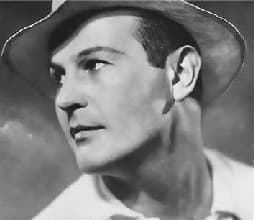
Życiorys:
Jan Wiktor Kiepura (ur. 16 maja 1902 w Sosnowcu, zm. 15 sierpnia 1966 w Harrison koło Nowego Jorku) – polski śpiewak (tenor) i aktor. Mąż Márthy Eggerth. Brat młodszego o dwa lata Władysława – również tenora, występującego jako Wł. Ladis.
Cieszył się na arenie międzynarodowej dużą popularnością, odnosząc sukcesy na scenach czołowych teatrów świata, jak również w salach koncertowych i na ekranie kinowym. Za pieniądze zarobione na scenach świata w okresie międzywojennym wybudował w Krynicy-Zdrojukosztem 160 tysięcy dolarów hotel Willa „Patria”. Hotel był scenerią kilku filmów realizowanych pod koniec lat 30. Od 1967 corocznie odbywa się w Krynicy-Zdroju Festiwal im. Jana Kiepury, którego twórcą był Stefan Półchłopek (dawniej: Festiwal Arii i Pieśni im. Jana Kiepury). Wystąpił w dwunastu filmach muzycznych, polskich i zagranicznych, m.in. O czym się nie myśli (1926), Neapol, śpiewające miasto (1930), Zdobyć cię muszę (1933).
Jan Kiepura był synem Franciszka (piekarza) i Marii (Miriam) z domu Neuman (uzdolnionej muzycznie, grającej na skrzypcach). Matka pochodziła z rodziny żydowskiej, aby wyjść za mąż, zdecydowała się na chrzest.
W latach 1916–1920 uczęszczał do Gimnazjum Państwowego im. Stanisława Staszica w Sosnowcu, gdzie zdał maturę. Był członkiem Polskiej Organizacji Wojskowej, w 1919 ochotnikiem w I Pułku Strzelców Bytomskich i uczestnikiem I powstania śląskiego.
Od 1921 studiował prawo na Uniwersytecie Warszawskim i równocześnie (prawdopodobnie w tajemnicy przed ojcem) poświęcał sporą część przysyłanych z domu pieniędzy na lekcje śpiewu u Wacława Brzezińskiego oraz dla opanowania specyficznych „tenorowych sekretów” u słynnego tenora Tadeusza Leliwy.
W 1923 odbył się pierwszy jego koncert w sali kina „Sfinks” w Sosnowcu, a w 1924 Emil Młynarski przyjął go do chóru w warszawskim Teatrze Wielkim, gdzie wystąpił w roli górala w „Halce” S. Moniuszki. Rolę tę prędko mu odebrano, ponieważ młodzieniec, chcąc za wszelką cenę pokazać się, przedłużał kilka swoich nut ponad miarę, nie zważając na dyrygenta.
W 1925 występował w tytułowej roli w „Fauście” Gounoda we Lwowie (15 stycznia), Poznaniu (26 stycznia) i w Warszawie (11 lutego), a następnie jako: Turiddu w „Rycerskości wieśniaczej” Mascagniego, książę Mantui w „Rigoletcie” Verdiego, Jontek w „Halce” Moniuszki w Warszawie, Faust w Katowicach.
W 1926 śpiewał partie: Cavaradossiego w „Tosce”, Rinuccia w „Giannim Schicchim” Pucciniego oraz Stefana w „Strasznym dworze” Moniuszki w Warszawie, Stefana i Fausta w Poznaniu, Fausta w Toruniu, Bydgoszczy, Inowrocławiu i Grudziądzu.
Po wyjeździe do Wiednia wystąpił jako Alfred w „Zemście nietoperza” Straussa w Theater an der Wien. Odniósł sukces w roli Cavaradossiego w „Tosce” u boku Marii Jeritzy w wiedeńskiej Staatsoper. Wystąpił także jako książę Mantui, Cavaradossi i Kalaf („Turandot” Pucciniego) w Berlinie, książę Mantui w Brnie, Raoul de Nangis („Hugenoci” Meyerbeera) i Faust w Budapeszcie.
Pierwsze występy Kiepury w Warszawie nie zwróciły większej uwagi świata artystycznego i nie przysporzyły mu sukcesów. Za radą przyjaciół postanowił udać się do Paryża, by ubiegać się o debiut w tamtejszej operze. Po drodze zatrzymał się w Wiedniu – i tu już pozostał.
Ciekawostką jest, iż historia odkrycia wielkiego talentu Kiepury w tym mieście, odpowiednio ubarwiona, przeszła już do legendy. Kiepurą zainteresował się Franz Schalk, dyrektor Państwowej Opery w Wiedniu, oraz wszechwładna podówczas w wiedeńskim świecie artystycznym znakomita śpiewaczka Maria Jeritza. Niebawem wystąpił więc Kiepura na scenie Staatsoper u boku Jeritzy w „Tosce” i chociaż w języku włoskim umiał zaśpiewać tylko dwie główne arie, a całą resztę swej partii z konieczności śpiewał po polsku, odniósł wspaniały sukces: prasa obwołała go „królem tenorów”, „krezusem głosowym” i nawet „następcą Carusa”.
Następną rolą Kiepury w Operze Wiedeńskiej była rola księcia Kalafa w „Turandot”, którą teatr ten wystawił w 1926 jako pierwszy, poza ojczystym krajem kompozytora. Tym razem opanował swoją partię po niemiecku, i to w ciągu zaledwie ośmiu dni, a śpiewał ją na zmianę z Leo Slezakiem. Po „Turandot” przyszła kolej na „Cud Heliany” Korngolda.
W 1929 występował już w mediolańskiej La Scali, debiutując z sukcesem w „Tosce”, a następnie biorąc udział w prapremierze opery „Le preziose ridicole” Felice Lattuady pod batutą Artura Toscaniniego. Ponownie pojawił się w La Scali w 1931, odnosząc sukces jako kawaler des Grieux w „Manon” pod muzycznym kierownictwem Victora de Sabaty.
Po wybuchu II wojny światowej w 1939 i postanowieniu rządów Polski i Francji o formowaniu armii polskiej we Francji Jan Kiepura zaangażował się jako ochotnik i przyjechał do Lille, by wesprzeć emigrantów polskich.
Źródło: Wikipedia
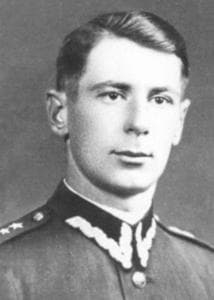
Życiorys:
Jan Wojciech Kiwerski (ps. Oliwa, ur. 23 maja 1910, zm. 18 kwietnia 1944), polski wojskowy, oficer Armii Krajowej, od 11 lutego 1944 dowódca 27 Wołyńskiej Dywizji Piechoty AK.
Urodził się 23 maja 1910 w Krakowie jako syn lekarza. Gdy miał 9 lat, umarł mu ojciec, zaś w 5 lat później – matka. Po śmierci rodziców w 14. roku życia został przyjęty do Korpusu Kadetów Nr 2. W czerwcu 1928 otrzymał maturę z wyróżnieniem i jako jeden z najlepszych absolwentów skorzystał z prawa wyboru broni, obierając sobie dalszą służbę w wojskach saperskich.
Szkołę Podchorążych Inżynierii w Warszawie ukończył w sierpniu 1931 w stopniu podporucznika i rozpoczął służbę w 3 baonie saperów w Wilnie. Z Wilna przeniesiono go do Batalionu Mostowego w Kazuniu w 1934 r. Dowodził tam plutonem do lipca 1937, tj. do czasu powołania go do Wyższej Szkoły Wojennej w Warszawie. Studia ukończył 18 sierpnia 1939 (XVIII promocja), uzyskując tytuł oficera dyplomowanego w stopniu kapitana, stając się wówczas jednym z najmłodszych oficerów WP w tym stopniu.
Kampanię wrześniową odbył w Samodzielnej Grupie Operacyjnej „Narew”, a następnie w Grupie Operacyjnej „Polesie”. Po kapitulacji pod Kockiem (5 października) gen. Kleeberg pozwolił odejść z pola walki tym żołnierzom, którzy nie chcieli iść do niewoli. Jan Kiwerski skorzystał z tego pozwolenia. Do Warszawy dotarł w listopadzie 1939. Od grudnia 1939 r. wszedł do tzw. sztabu dywersji SZP, stworzonego i kierowanego przez mjr F. Niepokólczyckiego. Od 1942 był dowódcą Oddziałów Dyspozycyjnych, potem Oddziałów („Motor” – „Sztuka”) Kedywu Komendy Głównej AK, używając pseudonimów: „Ziomek”, „Rudzki”, „Kalinowski”, „Lipiński”, później „Dyrektor”. W listopadzie 1942 awansowany do stopnia majora. Często osobiście dowodził zespołami żołnierzy w akcjach dywersyjnych.
W grudniu 1943 mjr „Oliwa” otrzymał nominację na stanowisko szefa sztabu Okręgu Wołyń. Udał się więc na Wołyń, aby zorientować się w panującej tam sytuacji. W dniu 2 lutego 1944 r. „Oliwa” wyjechał ponownie do Kowla, a 5 lutego 1944. dotarł do kwatery dowodzenia płk. „Lubonia”. W myśl przywiezionych przez „Oliwę” rozkazów, płk „Luboń” udał się do Warszawy na nowe stanowisko, zaś mjr dypl. „Oliwa” przejął dowództwo Okręgu Wołyń. 11 lutego 1944 objął dowództwo powstałej z sił Okręgu 27 Wołyńskiej Dywizji Piechoty AK.
Na Wołyniu mjr dypl. „Oliwa” dał się poznać jako bardzo wartościowy dowódca, wykorzystujący wszystkie zdobyte w swej dotychczasowej pracy umiejętności i całe doświadczenie. Dokładnie i szybko rozpoznał poszczególne oddziały Dywizji i ich możliwości bojowe, wniósł nowe wartości w zakresie szkolenia żołnierzy. Był przez nich szanowany i lubiany jako dowódca stanowczy, postępujący rzetelnie.
Grób Jana Kiwerskiego na Powązkach Wojskowych
Jan Wojciech Kiwerski poległ tragicznie w rejonie futoru Dobry Kraj w okolicznościach do dziś nie w pełni wyjaśnionych, 18 kwietnia 1944 w południe. Pochowany został w rejonie gajówki Stężarzyce, w lasach mosurskich na Wołyniu.
We wrześniu 1989 jego zwłoki ekshumowano i umieszczono tymczasowo w Kościele Garnizonowym w Warszawie. 21 kwietnia 1990 zostały uroczyście złożone na Cmentarzu Wojskowym na Powązkach w Warszawie w Kwaterze Harcerskiego Batalionu AK „Zośka”. Wraz z nim pochowano dwóch żołnierzy poległych podczas odbijania jego zwłok.
20 kwietnia 1990 prezydent RP awansował go pośmiertnie na generała brygady.
Jan Wojciech Kiwerski „Oliwa” odznaczony był Krzyżem Virtuti Militari IV klasy, V klasy i Krzyżem Walecznych.
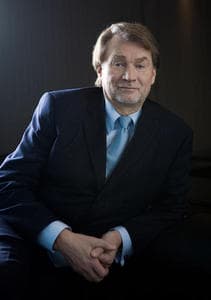
Życiorys:
+śp. Jan Jerzy Kulczyk (24.06.1950 – 29.07.2015) – polski przedsiębiorca, właściciel przedsiębiorstwa Kulczyk Holding, i międzynarodowej grupy inwestycyjnej Kulczyk Investments. W 2012 magazyn „Forbes”, umieścił Jana Kulczyka na pierwszym miejscu listy najbogatszych polskich ludzi biznesu. W 2013 amerykańskie czasopismo „Forbes” umieściło Jana Kulczyka na 384. miejscu wśród najbogatszych ludzi świata, szacując jego majątek na 3,5 mld USD.
Jan Kulczyk posiadał również liczne nagrody m.in.: Krzyż Oficerski Orderu Odrodzenia Polski, Perła Honorowa Polskiej Gospodarki w kategorii gospodarka, Tytuł Mecenasa Kultury.
W lipcu 2015 roku, firma BONGO przetransportowała ciało najbogatszego Polaka, pana Jana Kulczyka, z Wiednia do Poznania.
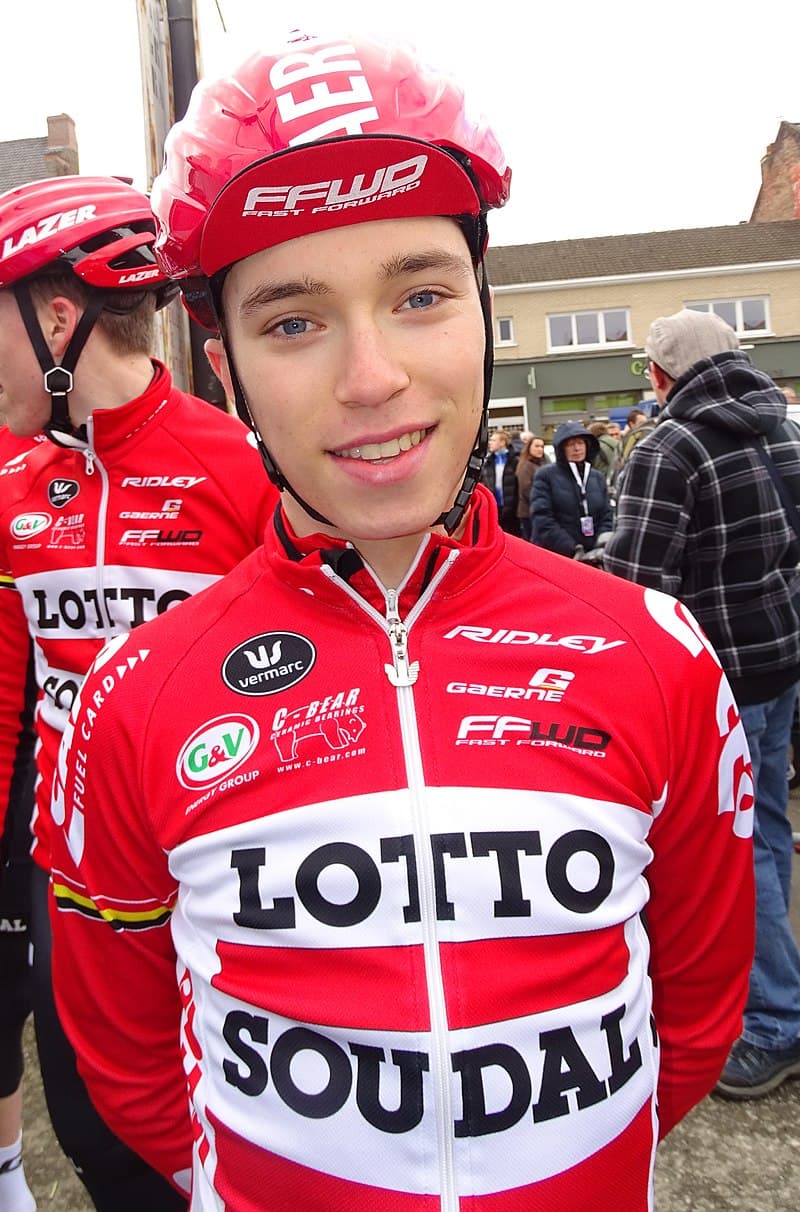
Życiorys:
Belgijski kolarz szosowy, należący do drużyny Lotto Soudal. Zdobywca srebrnego medalu Mistrzostw Świata w Kolarstwie Szosowym 2018 w wyścigu ze startu wspólnego w kategorii wiekowej do lat 23. Wicemistrz Europy w wyścigu ze startu wspólnego w kat. do 23 lat w 2016 r. Zwycięzca klasyfikacji młodzieżowej Criterium du Dauphine 2019.
Zmarł 5 sierpnia 2019 r. podczas operacji po wypadku, na trasie 76. edycji Tour de Pologne, z powodu urazu wielonarządowego.
Źródło: Wikipedia
Firma BONGO przetransportowała ciało kolarza z Polski do rodzinnego kraju.
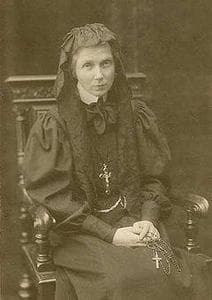
Życiorys:
Była córką Antoniego Ledóchowskiego (1823-1885), oficera w wojsku austriackim i Józefiny z d. Salis-Zizers (1831-1909). Siostra błogosławionej Marii Teresy Ledóchowskiej i Włodzimierza Ledóchowskiego, siostrzenica Mieczysława Halki Ledóchowskiego.
Gdy Julia miała 18 lat, przeniosła się wraz z rodziną do Lipnicy Dolnej k. Bochni (zob. Dwór Ledóchowskich)[potrzebne źródło]. Trzy lata później wstąpiła do krakowskiego klasztoru urszulanek, przyjmując imię Urszula.
W 1907, otrzymawszy błogosławieństwo Piusa X wraz z dwiema siostrami wyjechała do Sankt Petersburga, by objąć kierownictwo internatu przy polskim gimnazjum. W 1910 r. powstał dom dla wspólnoty oraz gimnazjum z internatem dla dziewcząt. Cztery lata później matkę Urszulę wydalono z Rosji, co spowodowane było wybuchem I wojny światowej. Urszula Ledóchowska udała się do Sztokholmu, następnie do Danii.
W Skandynawii kontynuowała pracę pedagogiczną – założyła szkołę dla dziewcząt, ochronkę dla sierot po polskich emigrantach, współpracowała z założonym w Szwajcarii przez Henryka Sienkiewicza Komitetem Pomocy Ofiarom Wojny, starając się uwrażliwić Skandynawów na sprawę niepodległości Polski.
W 1920 r. petersburskie urszulanki wróciły do Polski i osiedliły się w Pniewach k. Poznania. Niedługo potem Benedykt XV zezwolił im na przekształcenie się w Zgromadzenie Sióstr Urszulanek Serca Jezusa Konającego, mające żyć duchowością urszulańską oraz tradycją pracy wychowawczej jako uprzywilejowanego narzędzia ewangelizacji. W jej ramach urszulanki SJK, zwane od koloru habitów urszulankami szarymi, działały nie tylko w Polsce, ale także we Włoszech i Francji.
1 stycznia 1925 roku założyła w Pniewach pierwsze w Polsce koło Krucjaty Eucharystycznej[1].
Powszechnie ceniono ją i szanowano za poświęcenie dla innych (zwłaszcza dzieci) oraz pogodę ducha, którą sama uznawała za świadectwo więzi z Chrystusem. Gdy umarła podczas wizyty w Rzymie, mówiono, że „zmarła święta”.
20 czerwca 1983 w Poznaniu Jan Paweł II beatyfikował matkę Urszulę, a 18 maja 2003 w Rzymie kanonizował. W 1989, w pięćdziesiątą rocznicę śmierci zachowane od zniszczenia ciało błogosławionej Urszuli zostało przewiezione z Rzymu do Pniew i złożone w kaplicy domu macierzystego.
Jej imieniem nazwano parafie m.in. na lubelskim Węglinie, bydgoskim Miedzyniu, gdańskim Chełmie i gdyńskim Chwarznie.
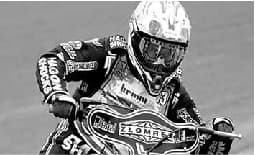
Życiorys:
Lee Richardson (ur. 25 kwietnia 1979 w Hastings, zm. 13 maja 2012 we Wrocławiu) – angielski żużlowiec.
Juniorski mistrz świata z 1999 (Vojens, Dania). Wielokrotny reprezentant Wielkiej Brytanii jako senior. Finalista Drużynowego Pucharu Świata w latach 2003-2006, w tym srebrny medalista w 2004 i brązowy z 2006. Uczestnik cyklu Grand Prix IMŚ w latach 2003-2006, dwukrotnie stawał na podium turniejów – w 2004 w Cardiff zajął trzecie, a w 2005 w Bydgoszczydrugie miejsce.
W lidze polskiej startował nieprzerwanie od 1999 do 2012 roku. Z polskimi drużynami wywalczył trzy medale DMP – złoty w 1999 i brązowy w 2002 oraz srebrny w 2006.
13 maja 2012 podczas meczu Betardu Sparty Wrocław z PGE Marmą Rzeszów w 3. biegu uległ ciężkiemu wypadkowi uderzając w bandę na prostej przeciwległej do startowej, w miejscu, gdzie kończy się banda „dmuchana”. Po upadku stwierdzono krwotok wewnętrzny, został przewieziony do szpitala, gdzie okazało się, że ma problemy z oddychaniem. Zmarł w szpitalu podczas operacji. Jako przyczyny śmierci podano wielonarządowe obrażenia klatki piersiowej, pęknięte płuco i wykrwawienie.
Pogrzeb Richardsona odbył się 7 czerwca 2012 roku w Hastings, jego rodzinnym mieście. Ciało żużlowca zostało skremowane.
Źródło: Wikipedia
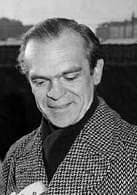
Życiorys:
Witold Małcużyński (ur. 10 sierpnia 1914 w Warszawie, zm. 17 lipca 1977 na Majorce), polski pianista.
Absolwent Gimnazjum im. Jana Zamoyskiego w Warszawie (1932).[1] W wieku 10 lat (1924) rozpoczął naukę gry na fortepianie, pobierając naukę w Konserwatorium Warszawskim. Był uczniem Józefa Turczyńskiego i Ignacego Paderewskiego. W 1937 został laureatem III Międzynarodowego Konkursu Pianistycznego im. Fryderyka Chopina (III nagroda). W czasie II wojny światowej otrzymał przydział do sekcji artystyczno-propagandowej, odwiedzając polskie obozy wojskowe oraz koncertował w Paryżu. Przed wkroczeniem Niemców opuścił z żoną Francję w zaplombowanym wagonie dostając się do Portugalii. W październiku 1940 wyjechał do Argentyny oraz na tournée po Ameryce Południowej, gdzie odniósł duże sukcesy. W kwietniu 1942 przybył do USA, koncertował w Nowym Jorku, Bostonie, Chicago, San Francisco i wielu innych miastach. W marcu 1945 przyjechał do Anglii i rozpoczął nagrywanie pierwszych płyt, które stały się jednym z głównych źródeł jego popularności. Po II wojnie światowej osiadł w Szwajcarii. W 1949 wyjechał do USA, aby w Nowym Jorku zapoczątkować swym recitalem Rok Chopinowski. Podróżował po obu Amerykach, Australii, Indiach i Europie, kilkakrotnie występował w Polsce. Witold Małcużyński przyczynił się do zwrotu Polsce przez władze kanadyjskie skarbów wawelskich i bezcennych pamiątek narodowej kultury, które na okres wojny zostały tam wywiezione na przechowanie. Zmarł na Majorce 17 lipca 1977.
Repertuar Małcużyńskiego obejmował utwory klasyczne i romantyczne, przede wszystkim Fryderyka Chopina.
Brat Karola Małcużyńskiego, posła na sejm i dziennikarza.
Był pierwszym Polakiem uczącym się (w latach ’50-’60) jogi metodą B.K.S. Iyengara, której używał do przygotowań przed koncertami.
Źródło: Wikipedia
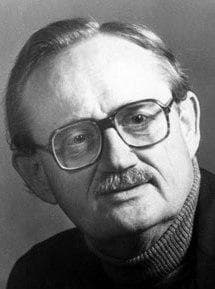
Życiorys:
Alan P. Merriam – amerykański etnomuzykolog. Zginął w katastrofie lotniczej na Okęciu w 1980 roku.
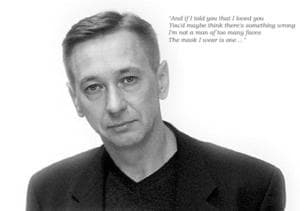
Życiorys:
Waldemar Milewicz (ur. 20 sierpnia 1956 w Dobrym Mieście, zm. 7 maja 2004 w Latifijji) – dziennikarz telewizyjny, reporter i korespondent wojenny.
Ukończył studia psychologiczne. W 1981 rozpoczął pracę w Telewizji Polskiej jako redaktor i dokumentalista redakcji Dziennika Telewizyjnego, następnie od 1988 był kierownikiem Redakcji Wymiany i Korespondentów Zagranicznych w Dyrekcji Programów Informacyjnych. W 1991 został publicystą Działu Zagranicznego Telewizyjnej Agencji Informacyjnej, a od 1992 pracował jako publicysta w Dziale Zagranicznym redakcji Wiadomości.
Był korespondentem wojennym, relacjonował wydarzenia z terenów konfliktów zbrojnych oraz wielkich katastrof. Prowadził reportaże m.in. z Bośni, Czeczenii, Kosowa, Abchazji, Rwandy, Kambodży, Somalii, Etiopii, Rumunii, Turcji i Hiszpanii. Znany m.in. dzięki serii reportaży pod tytułem Dziwny jest ten świat. Za swoją pracę otrzymał wiele nagród m.in. czterokrotnie został wyróżniony przez Prezesa Telewizji Polskiej, otrzymał tytuł Dziennikarza Roku, był laureatem Wiktora, Polskiego Pulitzera, Telekamery i nagrody Grand Press. Johns Hopkins University przyznał mu nagrodę SAIS-Ciba Prize for Excellence in Journalism. Z okazji 50-lecia telewizji państwowej prezydent RP uhonorował go Krzyżem Kawalerskim Orderu Odrodzenia Polski. W 2003 relacjonował II wojnę w Zatoce Perskiej.
Zginął w Iraku 7 maja 2004 roku, kiedy samochód polskiej ekipy dziennikarzy jadącej z Bagdadu do Karbali i Nadżafu ostrzelano z broni maszynowej (o zabójstwo oskarżono Salaha Chabbasa). Razem z nim zginął algierski montażysta z polskim obywatelstwem Mounir Bouamrane, a operator kamery Jerzy Ernst został ranny. Został pośmiertnie odznaczony Krzyżem Oficerskim Orderu Odrodzenia Polski. Urna z jego prochami spoczęła na Cmentarzu Wojskowym na Powązkach w Warszawie.
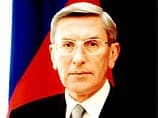
Życiorys:
Miał 65 lat. Skończył prestiżowy Moskiewski Instytut Stosunków Międzynarodowych. W swej karierze dyplomatycznej był m.in. ambasadorem w Belgii, Francji oraz przedstawicielem Rosji przy NATO.
W latach 90. pełnił funkcję wiceministra spraw zagranicznych. Ambasadorem w Warszawie został w 2002 r. i pełnił tę funkcję w czasie, gdy stosunki polsko-rosyjskie stały się, delikatnie mówiąc, trudne. Kontrowersje wzbudził jego list z okazji obchodów 60. rocznicy wybuchu Powstania Warszawskiego – Afanasjew napisał wówczas o „niepodważalnych wynikach II wojny światowej” i apelował, aby „nie podejmować prób przepisywania historii na nowo”.
Na początku tego roku krytykował polską „szpiegomanię” i apelował, by rosyjskim firmom w Polsce „nie stwarzać reputacji mafiosów”.
Ambasador działał na rzecz ułatwień w ruchu turystycznym między Polską i Rosją, które – jak przekonywał – mogą poprawić wzajemne stosunki między dwoma krajami. Postulował wprowadzenie tanich i szybko udzielanych wiz, m.in. dla młodzieży, studentów oraz osób odwiedzających groby krewnych.
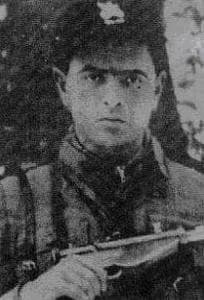
Życiorys:
Mjr art. rez. Jan Piwnik, ps. „Ponury”, „Donat”, ur. 31 sierpnia 1912 r. we wsi Janowice, pow. opatowski, syn Jana, rolnika, i Zofii Kłonica. W 1924r. został przyjęty do drugiej klasy Gimnazjum Państwowego im. Chreptowicza w Ostrowcu, które ukończył w 1932 r. otrzymując świadectwo dojrzałości. Od 11 sierpnia 1932 do 23 czerwca 1933 r. był w Szkole Podchorążych Rezerwy Artylerii we Włodzimierzu Wołyńskim i przeniesiony na praktykę do 10 Pułku Artylerii Ciężkiej (7 bateria), 20 września do rezerwy. Mianowany do stopnia podporucznika z dn. l stycznia 1935 r. Następnie wstąpił do Policji Państwowej i w 1938 r. ukończył szkołę oficerów rezerwy policji w Golędzinowie. W czasie kampanii wrześniowej 1939 r. dowodził kompanią w składzie zmotoryzowanego batalionu policji, m.in. w obronie rzeki Pilicy i na jego czele 23 września przekroczył granicę polsko-węgierską. Przez Węgry, Jugosławię i Włochy dotarł 11 listopada do Francji, gdzie został przydzielony do 4 Pułku Artylerii Ciężkiej 4 DR
Po kapitulacji Francji, w czerwcu 1940 r. ewakuowany do Wielkiej Brytanii. Tam w 4 dywizjonie artylerii lekkiej IV Brygady Kadrowej Strzelców, a później w I Samodzielnej Brygadzie Spadochronowej. W październiku 1940 r. zgłosił się do służby w kraju. Po przeszkoleniu w zakresie dywersji został zaprzysiężony w Oddziale VI Sztabu N W 10 października 1941 r.
W nocy z 7/8 listopada 1941 r. (operacja lotn. „Ruction”, ekipa 1) odbył skok na placówkę odbiorczą„Ugór”, położoną pod Łyszkowicami, 20 km na zachód od Skierniewic. Od grudnia 1941 do 9 kwietnia 1942 r. pełnił funkcję szefa odbioru w Komórce Przerzutów Powietrznych „Syrena” Komendy Głównej AK. Przewidziany na dowódcę ochrony Delegata Rządu. Na własną prośbę, 15 maja otrzymał przydział do organizacji dywersyjnej „Wachlarz” jako dowódca II odcinka, z głównym kierunkiem działania na Kijów i Charków, obejmującym swoim zasięgiem tereny woj. wołyńskiego i dalej na wschód. Po krótkim rekonesansowym wypadzie na Wołyń i Ukrainę, w drugiej połowie czerwca 1942 r. wyjechał ostatecznie z Warszawy do Równego. W lipcu wraz ze swoim zastępcą por. „Czarką” (Jan Rogowski) został aresztowany w Zwiahlu, skąd po kilku tygodniach, dzięki pomocy współtowarzyszy niedoli udało mu się uciec. Po dotarciu do Korca (dr Haduch), wobec skrajnego wyczerpania umieszczono go w majątku Tarnopolskich, gdzie ciężko rozchorował się na czerwonkę. Po wyzdrowieniu przystąpił do pracy, lecz na jego miejsce wyznaczono por.„Klona” (Tadeusz Klimowski) jako dowódcę II Odcinka. Wobec niemożności sprawowania swojej funkcji, w końcu września po wielu perypetiach, przedostał się do Warszawy.
31 grudnia mianowany przez gen. „Grota” (Stefan Rowecki) dowódcą akcji mającej za zadanie uwolnienia z więzienia w Pińsku żołnierzy „Wachlarza”. Udaną akcję przeprowadził 18 stycznia 1943 r., uwolnionych więźniów przetransportowano do Warszawy. Za wykonanie jej 3 lutego odznaczony Virtuti Militari 5 ki. Po rozwiązaniu „Wachlarza” przydzielony do Kedywu KG AK, gdzie był m.in. instruktorem w szkole dywersji „Zagajnik”, od 4 czerwca szefem Kedywu Okręgu AK Kielce i równocześnie dowódcą „Zgrupowań Partyzanckich AK Ponury”, których stan przeciętnie wynosił około 350 żołnierzy. Jednocześnie podzielił oddziały partyzanckie na: zgrupowanie nr 1 dowodzone przez por. „Nurta” (cc Eugeniusz Kaszyński), zgrupowanie nr 2 pod dowództwem por. „Robota” (cc Waldemar Szwiec) i zgrupowanie nr 3 por. „Mariańskiego” (Stanisław Pałac). Nawiązał kontakt z inż. Kazimierzem Czerniew-skim, ps. „Korebko”, który zorganizował w fabryce w Suchedniowie produkcję konspiracyjną pistoletów maszynowych „Sten”.
W nocy z 2/3 lipca zgrupowanie dokonało dywersji na dwa niemieckie pociągi pomiędzy stacjami Suchedniów i Łączną przy stracie jednego zabitego partyzanta. 12 lipca 1943 r. Niemcy w odwet za akcje na pociągi dokonali pierwszej pacyfikacji wsi Michniów. W odpowiedzi na to partyzanci urządzili zasadzkę na pociąg osobowy jadący ze Skarżyska do Kielc przy bloku kolejowym Podłazie w pobliżu Michniowa Zatrzymany pociąg ostrzelano, po opanowaniu wagonów wybito prawie wszystkich Niemców. O świcie 13 lipca Niemcy ponownie otoczyli Michniów i całkowicie go spalili, a także zamordowali znajdujące się tam osoby. Łącznie zginęło w Michniowie 204 mieszkańców. Obława niemiecka zorganizowana 19 lipca na rejon obozowiska partyzanckiego na Wykusie nie odniosła spodziewanych rezultatów, gdyż „Ponury” poinformowany o szykującej się obławie przeszedł w Lasy Starachowickie, a następnie na początku sierpnia w Lasy Osieczyńskie. Ze względu na bezpieczeństwo i zaopatrzenie rozdzielił zgrupowania i tak: „Robota” poszło w Koneckie, „Nurta” w Lasy Siekierzyńskie, a „Mariańskiego” w Góry Świętokrzyskie. Odtąd walczyły oddzielnie, wykonując szereg zadań bojowych. 4 września w godzinach południowych por. „Robot” opanował stację kolejową Wólka Plebańska i po przyjeździe pociągu z Koluszek do Rozwadowa, zaatakowano go. W wyniku akcji poległ cc ppor. ,,Rafał” (Rafał Niedzielski). Niemców zginęło 16, a kilkunastu było rannych. Zdobyto broń, amunicję i oporządzenie.
Celem wręczenia sztandaru wyznaczył koncentrację wszystkich zgrupowań na Wykusie na 16 września 1943. Wobec meldunków o szykującej się obławie niemieckiej przesunął oddziały do lasów w Barwinku. Jednak o świcie 16 września nieprzyjaciel zaatakował. Walka trwała do zmroku. Kolejno oderwały się od wroga i po trzech dniach spotkały się na Łysicy w Górach Świętokrzyskich. Przesunął się w rejon lasów nadleśnictwa Samsonów. 4 października ponownie zgrupowania rozdzielił, sam z drużyną ochronną udał się do wsi Rejów pod Skarżyskiem i zakwaterował się w młynie Władysława Cioka, gdzie 7 października miał przybyć płk „Nil” (August Emil Fieldorf) szef Kedywu KG AK. Po odprawie młyn został zaatakowany przez przeważające siły nieprzyjaciela, jednak wszyscy znajdujący się tam oficerowie zdołali się wycofać do pobliskiego lasku. Zginął partyzant z drużyny ochronnej, kpr. „Jędrek” (Andrzej Pasek). W tym czasie zgrupowanie „Robota” znajdowało się w Lasach Niekłańskich, a jego dowódca na melinie, chory, w Wielkiej Wsi, która została zaatakowana 14 października. W czasie przebijania się z osłoną poległ.
Po ponownej koncentracji zgrupowań na Wykusie, wobec całkowitego zaskoczenia, rano 28 października Niemcy urządzili obławę, podczas której zginęło 27 żołnierzy z oddziału por. „Jacka” (Jan Kosiński) oraz 9 od „Ponurego”. Stało się jasne, iż w sztabie był agent Gestapo, którym później okazał się ppor. „Motor” (Jerzy Wojnowski). Po przebiciu się „Ponury” zarządził częściową demobilizację. Po klęsce popadł w otwarty konflikt z Komendą Okręgu, który narastał stopniowo, m.in. na skutek narażania ludności cywilnej na represje oraz wobec niespełnienia funkcji szefa Kedywu Okręgu Radomsko-Kieleckiego, a jedynie dowodzenia zgrupowaniami.
7 października 1943 r. zrzekł się funkcji szefa Kedywu, a 2 stycznia 1944 r. odwołany przez płk „Nila” z dowództwa zgrupowań, które objął por. „Nurt”. 20 stycznia wyjechał do Warszawy. „Motora” po zatrzymaniu i całonocnym przesłuchaniu rozstrzelano 28 stycznia 1944 r. Następnie przydzielony do mjr. „Kotwiczą” (Maciej Kalenkiewicz) i 20 lutego wyjechał z Warszawy na Nowogródczyznę. Do kwietnia uczestniczył w porządkowaniu spraw organizacyjnych i personalnych oraz szkoleniu kadry.
Brał udział w składzie Wojskowego Sądu Specjalnego w sprawie por. „Lecha” (Józef Świda), dowódcy Zgrupowania Nadniemeńskiego. Od 1 maja był dowódcą VII baonu 77 pp AK Okręgu Nowogródek, który w szczytowym okresie liczył ok. 800 żołnierzy. Dowodził 29 kwietnia nieudaną akcją opanowania Szczuczyna. Do ważniejszych akcji bojowych baonu należy zaliczyć zdobycie niemieckich punktów obrony w Wasi-liszkach i Skrzybowcach (maj) oraz w Juchnowiczach i pokonanie niemieckiej odsieczy z Nowego Dworu do Juchnowicz 8 czerwca. Poległ 16 czerwca 1944 r. podczas udanego natarcia na niemiecki stiitzpunkt w Je-właszach, pochowany został w Wawiórce koło Lidy. Pośmiertnie mianowany do stopnia majora. Odznaczony Virtuti Militari 4 kl. i 5 kl. Po wojnie był zajadle atakowany przez władze komunistyczne, m.in. za likwidację części bandyckiego oddziału Gwardii Ludowej „Tanka” (Zenon Kołodziejski) w dniu 8 grudnia 1943 r. Również zaciekle walczono z jego legendą która powstała na Kielecczyźnie jeszcze wiatach okupacji niemieckiej. 17 września 1987 r., po osiemnastu latach starań, prochy majora zostały sprowadzone z Nowogródczyzny w rodzinne Góry Świętokrzyskie, złożone na wieczny spoczynek 12 czerwca 1988 r. w klasztorze oo. Cystersów w Wąchocku.
Krzysztof A. Tochman
Dane ze strony www.ponury.com
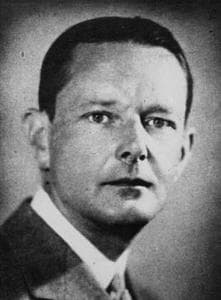
Życiorys:
Edward Bernard Raczyński (ur. 19 grudnia 1891 w Zakopanem, zm. 30 lipca 1993 w Londynie) – polski dyplomata, polityk i pisarz, prezydent RP na uchodźstwie w latach 1979–1986.
Był zarówno najstarszym (złożył urząd w wieku 95 lat), jak i najdłużej żyjącym prezydentem RP (zmarł w wieku 101 lat i 7 miesięcy).
Młodość
Hrabia, pochodził ze znanego wielkopolskiego rodu Raczyńskich herbu Nałęcz. Jego ojcem był Edward Aleksander Raczyński, a matką Róża z Potockich 1 voto Władysławowa Krasińska. Był bratem Rogera Adama Raczyńskiego oraz przyrodnim bratem Karola Rogera Raczyńskiego oraz Adama Krasińskiego, IV ordynata na Opinogórze.
Lata szkolne spędził w Krakowie, gdzie mieszkał w rezydencji „pod Baranami” w domu babci, Adamowej Potockiej. Po jej śmierci wraz z rodziną przeprowadził się na ulicę Szpitalną nieopodal teatru. Początkowe lata edukacji odbywał wraz z bratem Rogerem w domu, co było powszechnie praktykowane w sferach ziemiańskich w Polsce. Następnie (od piątej klasy) uczęszczał do II LO im. króla Jana III Sobieskiego w Krakowie.
Odbył studia prawnicze w Lipsku, studiował również w londyńskiej Szkole Nauk Politycznych, doktorat z prawa uzyskał na Uniwersytecie Jagiellońskim.
Minister Spraw Zagranicznych
W 1919 rozpoczął pracę w Ministerstwie Spraw Zagranicznych. Przebywał na placówkach dyplomatycznych w Kopenhadze, Londynie (sekretarz legacyjny poselstwa RP) i Genewie. Od 1932 reprezentował Rzeczpospolitą jako stały delegat przy Lidze Narodów w Genewie (na tym stanowisku niespełna trzy lata). Przez dwie kadencje, od 1934 aż do cofnięcia uznania rządowi RP na uchodźstwie przez rząd brytyjski (5 lipca 1945), pełnił funkcję ambasadora RP w Londynie. W imieniu rządu polskiego podpisywał polsko-brytyjski układ sojuszniczy.
II wojna światowa
W latach 1941–1943 był ministrem spraw zagranicznych. W oparciu o dokumenty przywiezione w postaci mikrofilmów do Londynu przez kuriera Jana Karskiego i potwierdzone jego świadectwem, Edward Raczyński przygotował i 10 grudnia 1942 przedstawił aliantom szczegółowy raport o holokauście, który został wystosowany jako oficjalna nota Rządu RP na uchodźstwie skierowana do rządów krajów będących sygnatariuszami Deklaracji Narodów Zjednoczonych. Nota Raczyńskiego była pierwszym na świecie oficjalnym raportem na temat holokaustu informującym o nim światową opinię publiczną. Raczyński osobiście redagował również oświadczenie rządu po odkryciu w 1943 grobów w Katyniu oraz wysłał prośbę do Międzynarodowego Czerwonego Krzyża o wyjaśnienie zbrodni.
Okres powojenny
Rada Trzech
Po wojnie był organizatorem oraz członkiem (wspólnie z Władysławem Andersem i Tomaszem Arciszewskim) Rady Trzech. Powstała ona w 1954 na skutek opozycji wobec Augusta Zaleskiego, który nie chciał ustąpić z funkcji prezydenta. Jej skład zmieniał się sześciokrotnie, jednak stałym jej członkiem był Edward Raczyński.
Działalność po prezydenturze
Po upływie 7-letniej kadencji prezydenckiej 1979–1986 ustąpił, zgodnie z wcześniejszą zapowiedzią, jak jego poprzednik ze stanowiska głowy państwa.
Autor wspomnień
W sojuszniczym Londynie (Londyn 1974) oraz książki Czas wielkich zmian. Rozmowy przeprowadzone przez Krzysztofa Muszkowskiego (ISBN 2-85316-064-5, Paryż 1990).
Założył pod koniec 1990 roku Fundację im. Raczyńskich w Poznaniu i przekazał jej pałac i park w Rogalinie, Galerię Rogalińską przy Muzeum Narodowym, której pozostawał faktycznym właścicielem, oraz przysługujące mu prawa do majątku ziemskiego otaczającego pałacu i parku rogalińskiego. W skład galerii weszło, m.in. przeszło 300 obrazów, rzeźby i różne przedmioty artystyczne. Pałac i park w Rogalin zostały we władaniu Muzeum Narodowego w Poznaniu. Do tej pory, Fundacja, wbrew woli Fundatora, nie mogła odzyskać na własność majątku rolnego, które dalej musi wydzierżawiać, by spełnić swój cel statutowy ochrony jednego z najpiękniejszych krajobrazów Wielkopolski.
Edward Raczyński został pochowany w Rogalinie.
Ordery i odznaczenia
2 maja 1923 został odznaczony Krzyżem Kawalerskim Orderu Odrodzenia Polski.
10 listopada 1933 „za zasługi na polu pracy państwowej w dziale służby zagranicznej” został odznaczony przez Prezydenta RP Ignacego Mościckiego Krzyżem Komandorskim Orderu Odrodzenia Polski.
11 listopada 1937 „za wybitne zasługi w służbie państwowej” został odznaczony Krzyżem Komandorskim z Gwiazdą Orderu Odrodzenia Polski (1937).
Z tytułu objęcia urzędu Prezydenta RP Edward Raczyński z dniem 8 kwietnia 1979 r. został kawalerem Orderu Orła Białego, kawalerem Wielkiej Wstęgi Orderu Odrodzenia Polski i Wielkim Mistrzem obu tych orderów.
W 1991 został odznaczony Krzyżem Wielkim Orderu Zasługi Rzeczypospolitej Polskiej.
18 grudnia 1990 uchwałą Rady Miasta Poznania otrzymał tytuł Honorowego Obywatela Miasta Poznania.
Odznaczony także Krzyżami Wielkimi zagranicznych orderów: Imperium Brytyjskiego, Piusa IX, Danebroga, Gwiazdy i Korony Rumunii, Trzech Gwiazd, Gwiazdy Afganistanu i innymi.
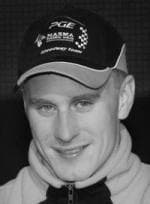
Życiorys:
Lee Richardson (ur. 25 kwietnia 1979 w Hastings, zm. 13 maja 2012 we Wrocławiu) – angielski żużlowiec.
Juniorski mistrz świata z 1999 (Vojens, Dania). Wielokrotny reprezentant Wielkiej Brytanii jako senior. Finalista Drużynowego Pucharu Świata w latach 2003-2006, w tym srebrny medalista w 2004 i brązowy z 2006. Uczestnik cyklu Grand Prix IMŚ w latach 2003-06, dwukrotnie stawał na podium turniejów – w 2004 w Cardiff zajął trzecie, a w 2005 w Bydgoszczy drugie miejsce.
W lidze polskiej startował nieprzerwanie od 1999 do 2012 roku. Z polskimi drużynami wywalczył trzy medale DMP – złoty w 1999 i brązowy w 2002 oraz srebrny w 2006.
13 maja 2012, podczas meczu Betardu Sparty Wrocław z PGE Marmą Rzeszów w 3. biegu uległ ciężkiemu wypadkowi uderzając w bandę na prostej przeciwległej do startowej, w miejscu, gdzie kończy się banda „dmuchana”. Po upadku stwierdzono krwotok wewnętrzny, został przewieziony do szpitala, gdzie okazało się, że ma problemy z oddychaniem. Zmarł w szpitalu podczas operacji. Jako przyczyny śmierci podano wielonarządowe obrażenia klatki piersiowej, pęknięte płuco i wykrwawienie.
Pogrzeb Richardsona odbył się 7 czerwca 2012 roku w Hastings, jego rodzinnym mieście. Ciało żużlowca zostało skremowane.

Życiorys:
Józef Ruciński w czasie I wojny światowej walczył w szeregach cesarskiej i królewskiej armii. Na stopień porucznika został mianowany ze starszeństwem z 1 lipca 1915 roku w korpusie oficerów rezerwy piechoty. Jego oddziałem macierzystym był Pułk Piechoty Nr 13.
15 czerwca 1919 roku został przyjęty do Wojska Polskiego z zatwierdzeniem posiadanego stopnia porucznika ze starszeństwem z dniem 1 lipca 1915 roku, zaliczony do I Rezerwy armii i powołany do służby czynnej na czas wojny.
Został awansowany do stopnia majora saperów ze starszeństwem z dniem 1 czerwca 1919. W latach 20. był oficerem 2 pułku saperów, w tym w 1923 służył w Szefostwie Inżynierii i Saperów Dowództwa Okręgu Korpusu Nr II. W czerwcu 1925 został przesunięty w 2 pułku saperów na stanowisko kwatermistrza. W października 1926 został przeniesiony do kadry oficerów saperów i przydzielony do Oficerskiej Szkoły Inżynierii na stanowisko kwatermistrza. W kwietniu 1928 został przeniesiony do Zarządu Fortecznego Kraków na stanowisko kierownika.
Jako emerytowany major w 1932 został wylosowany sędzią sądu przysięgłych we Lwowie.
W 1934 roku pozostawał w ewidencji Powiatowej Komendy Uzupełnień Lwów Miasto. Posiadał przydział do Oficerskiej Kadry Okręgowej Nr VI. Był wówczas „przewidziany do użycia w czasie wojny”.
Źródło: Wikipedia
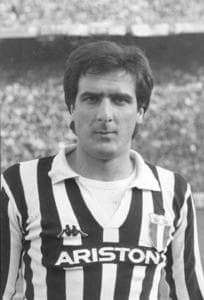
Życiorys:
Gaetano Scirea – (ur. 25 maja 1953 r. w Cernusco sul Naviglio we Włoszech, zm. 3 września 1989 r. w Babsku) – włoski piłkarz, grał na pozycji stopera. Piłkarską przygodę rozpoczął w Atalancie Bergamo. Mimo swoich dość słabych jak na obrońcę warunków fizycznych szybko stał się jednym z najlepszych defensorów Serie A. Grał na tyle dobrze, że w 1975 roku jego talent dostrzegli działacze samego Juventusu.
Kariera w Atalancie
W Serie A zadebiutował 24 września 1972 roku, Atalanta grała z Cagliari i z Sardynii przywiozła bezbramkowy remis. Później jednak znacznie częściej przegrywała i spadła do drugiej ligi. Scirea jeszcze przez rok pozostał w Bergamo i do Serie A powrócił już jako zawodnik Juve.
Kariera w Juventusie
W roku 1974 związał się ze Starą Damą z Turynu na długich czternaście lat. Był silnym punktem ekipy, która swego czasu nie miała sobie mocnych. Z Juve zdobył wiele trofeów, aż siedem razy był mistrzem Italii.
Kariera w reprezentacji Włoch
Pojechał na trzy finały mistrzostw świata. Na pierwsze w Argentynie – niecałe trzy lata po reprezentacyjnym debiucie (30.12.1975 Włochy – Grecja 3:2). Podopieczni Enzo Bearzota na pewno nie zawiedli, dotarli do strefy medalowej i w meczu o trzecie miejsce ulegli 1:2 Brazylii. Scirea wystąpił we wszystkich siedmiu meczach. Zanim nadszedł pamiętny dla Włochów turniej w Hiszpanii, dwa lata wcześniej odbyły się mistrzostwa Europy, które organizowali. Ostatnim dla nich sprawdzianem przed Euro ’ 80 był towarzyski mecz z Polską. Na Stadio Comunale w Turynie padł remis 2:2, a Scirea w 24 minucie strzelił pierwszego gola dla drużyny narodowej. Natomiast sam turniej Azzurri znów zakończyli tuż za podium. Na początek Espana ’ 82 Włosi zmierzyli się z biało-czerwonymi. Dla Scirei było to o tyle ważny, że 50 występ w narodowej koszulce. Na Estadio Balaidos w Vigo gole nie padły, jedni z faworytów turnieju nie potrafili również wygrać z Peru oraz Kamerunem i w słabym stylu awansowali do najlepszej dwunastki. I dopiero od tego momentu rozpoczął się ich wielki popis. Pokonali Argentynę z Diego Maradoną i Mario Kempesem w składzie, a następnie okazali się nieznacznie lepsi od szalenie widowiskowo grającej Brazylii. Na fali entuzjazmu drużyna Bearzota, której kapitanem był ponad czterdziestoletni Dino Zoff, nadspodziewanie łatwo pokonała Polskę i w finale nie dała szans RFN. Scirea zaliczył kolejnych siedem świetnych spotkań i został wybrany do najlepszej jedenastki mistrzostw. Cztery lata później obrońcy tytułu zawiedli na całej linii. Nie bez kłopotów wyszli z grupy, gdzie za rywali mieli Bułgarię, Argentynę i Koreę Południową, ale już w 1/8 finału nie sprostali Francji. Cztery ostatnie mecze w reprezentacji Włoch Scirea zaliczył jako kapitan.
Wypadek i śmierć
W wypadku zginęli tłumaczka Barbara Januszkiewicz, kierowca Henryk Pająk, oraz Scirea, drugi trener Juventusu (Włoch przybył do Polski na kilka dni, aby obejrzeć w akcji drużynę Górnika Zabrze). Zderzenie było silne, w momencie wypadku wybuchły cztery kanistry z benzyną i zablokowały się troje z czworga drzwi. Uratował się tylko działacz Górnika Zabrze, którego drzwi pozostały sprawne. Pozostali spłonęli żywcem. Po ugaszeniu pożaru policja potrzebowała kilkunastu godzin aby zidentyfikować ofiary wypadku.
Pogrzeb
Został pochowany w grobowcu rodziny żony, około stu kilometrów od Turynu, w niewielkim położonym na wzgórzu miasteczku Morsasco.
We wrześniu 1989 roku, firma BONGO przeprowadziła czynności związane z transportem ciała piłkarza Juventus Turyn z Polski do Włoch.

Życiorys:
Ewart T. Sconierr – amerykański lotnik, bohater II wojny światowej.
W sierpniu 1942 roku zajął miejsce pierwszego pilota i bezpiecznie sprowadził na ziemię ostrzelany bombowiec. Niestety w październiku podobna akcja już się nie powiodła – jego samolot został zaatakowany przez niemiecki myśliwiec i wpadł do morza, a francuscy rybacy przekazali załogę Niemcom. Następnie ślad prowadzi do niemieckiego obozu jenieckiego w Żaganiu, gdzie trafił Sconiers. Wiadomo jeszcze, że zmarł w szpitalu w Lubinie, dlatego na tamtejszym cmentarzu Amerykanie kilkakrotnie poszukiwali jego ciała – bez rezultatu.
Ewart Sconiers został pochowany obok swojej matki na cmentarzu Defuniak Springs 27 stycznia 2018.
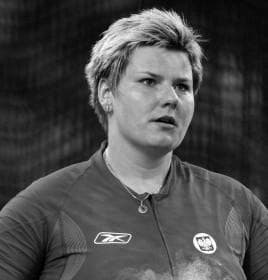
Życiorys:
Kamila Skolimowska (ur. 4 listopada 1982 w Warszawie, zm. 18 lutego 2009 w Vila Real de Santo António – polska lekkoatletka, uprawiająca rzut młotem, mistrzyni olimpijska.
Córka Roberta, znanego sztangisty, medalisty mistrzostw świata i olimpijczyka z 1980. Członkini grupy lekkoatletycznej Samsung.
Swoją przygodę ze sportem zaczęła od podnoszenia ciężarów. Pierwsze lekkoatletyczne kroki stawiała na boisku warszawskiej Legii gdzie pod okiem Zygmunta Jałoszyńskiego pchnięcie kulą uprawiał jej brat Robert. Do trenowania rzutu młotem zachęcił ją wówczas Zbigniew Pałyszko. W późniejszych latach kariery startowała w barwach Warszawianki oraz Gwardii Warszawa.
Już jako młodziczka osiągnęła poziom międzynarodowy (10. miejsce na listach światowych w 1997). W tym samym roku zdobyła tytuł mistrzyni Europy juniorek, a dwa lata później złoty medal mistrzostw świata juniorów młodszych. Startując w wieku niespełna osiemnastu lat na Igrzyskach Olimpijskich w Sydney dość nieoczekiwanie została mistrzynią olimpijską.
10 listopada 2000 r., za to sportowe osiągnięcie, prezydent Aleksander Kwaśniewski nadał Skolimowskiej Złoty Krzyż Zasługi[2] 20 lutego 2009 r. za wybitne osiągnięcia sportowe oraz za zasługi dla rozwoju i upowszechniania sportu, prezydent Lech Kaczyński odznaczył pośmiertnie Skolimowską Krzyżem Kawalerskim Orderu Odrodzenia Polski.
Późniejsze jej starty w igrzyskach olimpijskich i mistrzostwach świata nie przyniosły już medalowych sukcesów. Najwyższe, czwarte lokaty zajęła podczas mistrzostw świata w Edmonton (2001) i Osace (2007). Na igrzyskach olimpijskich w Atenach (2004) wywalczyła 5. miejsce, natomiast cztery lata później w Pekinie start w finale zakończyła bez wyniku, paląc wszystkie trzy próby. Jedynie w mistrzostwach Starego Kontynentu udało się jej sięgnąć po medale – w 2002 roku wywalczyła srebro, zaś w 2006 brąz. 12-krotna mistrzyni Polski – ostatnio w 2008 (wyniki). Jej rekord życiowy – 76,83 m został uzyskany 11 maja 2007 w Ad-Dausze podczas mityngu Super Grand Prix IAAF. Zawodniczka osiągając ten rezultat pobiła poprzedni swój najlepszy wynik o 1,54 m. Jest to 7. rezultat w historii światowej lekkoatletyki.
Od 2004 do 2009 roku pracowała w Oddziale Prewencji Komendy Stołecznej Policji w Piasecznie (woj. mazowieckie). W 2005 obroniła pracę magisterską pt. Metody oceny zdolności kredytowej i jej zabezpieczeń na Wydziale Zarządzania Uniwersytetu Warszawskiego.
Kamila Skolimowska zmarła niespodziewanie 18 lutego 2009 w czasie zgrupowania polskich lekkoatletów w Portugalii. Według informacji przekazanych PAP, zasłabła podczas treningu. Podczas transportu do szpitala w Vila Real de Santo António straciła przytomność. Mimo godzinnej reanimacji lekarzom nie udało się jej uratować[5]. Przyczyną śmierci był zator tętnicy płucnej.
Pogrzeb miał miejsce 26 lutego 2009. Mszy świętej koncelebrowanej w Katedrze Polowej Wojska Polskiego w Warszawie przewodniczył Biskup Tadeusz Płoski. Urna z jej prochami została złożona w grobie przy Alei Zasłużonych Cmentarzu Wojskowym na Powązkach w Warszawie.
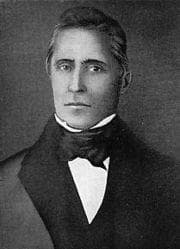
Życiorys:
Sir Paweł Edmund Strzelecki (ur. 20 lipca 1797 w Głuszynie k. Poznania, zm. 6 października 1873 w Londynie) – polski podróżnik, geolog, geograf, badacz i odkrywca.
W salonach – z powodu trudnego do wymówienia nazwiska – nazywano go krótko – „The Count”, czyli hrabia. Był polskim szlachcicem z senatorskiej rodziny. Dążył do spełnienia życiowej misji, do odbicia swojego piętna na losach świata. Wierzył w potęgę ludzkiego rozumu i cywilizacji technicznej, głosił potrzebę racjonalnego użytkowania ziemi przez człowieka, wierzył w sprawiedliwość społeczną i równe prawa wszystkich ludzi, w tym również Indian, Aborygenów (zwracał uwagę na niewłaściwe i wyniszczające ich traktowanie) i Polinezyjczyków. Mówił o tym głośno i miał równie wielu przeciwników, co przyjaciół. Urodził się w Głuszynie pod Poznaniem 20 lipca 1797r., zmarł w Londynie 6 października 1873 roku, gdzie został pochowany – prochy zaś przeniesiono do Poznania (krypta zasłużonych Wielkopolan w kościele Św. Wojciecha).
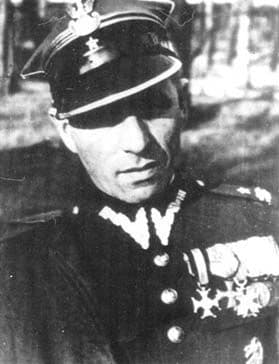
Życiorys:
Henryk Sucharski (ur. 12 listopada 1898 w Gręboszowie, zm. 30 sierpnia 1946 w Neapolu) – jeden z obrońców Polskiego Wybrzeża, dowódca garnizonu Westerplatte, po kapitulacji więzień obozów niemieckich.
Urodził się jako czwarte dziecko Stanisława – wiejskiego szewca i Agnieszki z domu Bojko. W latach 1909–1917 był uczniem II Cesarsko-Królewskiego Gimnazjum w Tarnowie.
Służbę wojskową rozpoczął w Armii Austro-Węgier 13 lutego 1917 roku w batalionie zapasowym 32 pułku strzelców w Bochni. 17 listopada 1917 zdał tzw. maturę wojenną. W 1918 ukończył Rezerwową Szkołę Oficerską w Opatowie i jako kadet-aspirant, został wcielony do 9. kompanii 32 pułku strzelców we Włoszech.
Po powrocie do niepodległej Polski 7 lutego 1919 roku został powołany do służby w Wojsku Polskim w 16 pułku piechoty w Tarnowie. W marcu został przeniesiony na front czeski do Cieszyna. W czerwcu został awansowany do stopnia kaprala.
Podczas wojny polsko-bolszewickiej, pod koniec października 1919 został przeniesiony na front litewsko-białoruski, gdzie we wrześniu został mianowany podchorążym, a w styczniu 1920 otrzymał awans na podporucznika i został mianowany dowódcą kompanii w batalionie szturmowym 6 Dywizji Piechoty. Za osobistą odwagę w obliczu wroga i wykazanie inicjatywy w dowodzeniu w bitwie pod Połonicą-Bogdanówką, 30 sierpnia 1920 został przedstawiony do odznaczenia Krzyżem Srebrnym Orderu Wojskowego Virtuti Militari, który wręczono mu w 1922. Ponadto za męstwo na polu chwały otrzymał Krzyż Walecznych. Pod koniec 1921 został przyjęty do zawodowej służby wojskowej. W 1922 awansował na stopień porucznika piechoty ze starszeństwem z dniem 1 czerwca 1919. W latach 20. był oficerem zawodowym 20 pułku piechoty w garnizonie Kraków. W 1928 został awansowany do stopnia kapitana piechoty ze starszeństwem z dniem 1 stycznia 1928[ W 1932 był oficerem 35 pułku piechoty w garnizonie Brześć. W 1938 awansował na majora.
3 grudnia 1938, z rozkazu szefa Biura Personalnego Ministerstwa Spraw Wojskowych, został przeniesiony na stanowisko komendanta Wojskowej Składnicy Tranzytowej na Westerplatte, którą dowodził do 2 września 1939 roku.
W uznaniu bohaterstwa i niezłomnego ducha załogi Westerplatte, dowództwo niemieckie pozwoliło majorowi Henrykowi Sucharskiemu odejść do niewoli z szablą przy boku. W wyniku pomyłki Niemców wręczono mu jednak nie jego własną szablę, a szablę kapitana Franciszka Dąbrowskiego. Broń odebrano mu jednak zaraz po dotarciu do pierwszego obozu.
Wraz z innymi oficerami został odwieziony do Hotelu Centralnego w Gdańsku. Następnie był przetrzymywany kolejno w obozach Stablack, Riesenburg (Prabuty), w Oflagu IV A Hohenstein, Oflagu II B Arnswalde (Choszczno), Oflagu II D Gross-Born (Borne Sulinowo – Kłomino). W marcu 1945 podczas ewakuacji obozów jenieckich uległ wypadkowi i trafił do szpitala niedaleko Schwerina.
Po uwolnieniu, w lipcu 1945 przedostał się do dowództwa 2 Korpusu Polskiego we Włoszech. W styczniu 1946 został przyjęty do służby wojskowej z przydziałem na dowódcę 6 Batalionu Strzelców Karpackich. Od 19 sierpnia przebywał w brytyjskim szpitalu wojskowym w Neapolu, gdzie zmarł 30 sierpnia 1946 na zapalenie otrzewnej. Został pochowany 1 września na Polskim Cmentarzu Wojskowym w Casamassima we Włoszech.
Źródło: Wikipedia

Życiorys:
Stanisław Szadurski – bohater plutonowy. Zmarł w 1940 r. w wyniku powikłań od postrzału w głowę.
3 kwietnia 1987 roku Biuro Opieki Nad Grobami Obcokrajowców (BONGO) dokonało ekshumacji i dowiozło trumnę do Pleszewa, gdzie plutonowy Stanisław Szadurski został pochowany w grobie swojej żony Heleny na cmentarzu przy ul. Poznańskiej.